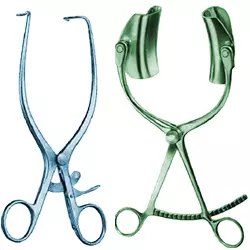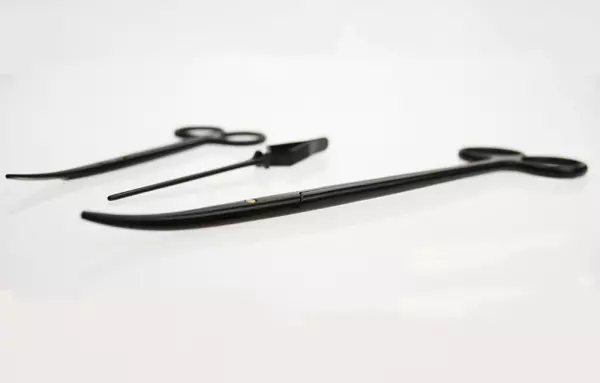
Micro and eyelid locks Abdominal wall holder Laminectomy spreader "Modular" retra...
Portal and digital medical technology fair of the largest MedTech cluster in Germany

diBLACK-LINE - the new generation of surgical...
diBLACK-LINE – the new generation of surgical instruments from DIMEDA DIMEDA Instrumente of...

A laminectomy involves the removal of one or more vertebrae from the spine. In general, the procedure is performed through a back incision. The incision is closed with stitches or staples. The recovery process usually requires a few days. Patients are advised not to eat or drink anything for six to twelve hours before the surgery. The doctor may prescribe certain medications to be taken with water before the procedure. A patient may go home the same day of the surgery, but it's important to have someone drive them home. It's important to move as much as possible following the surgery to minimize swelling.
A laminectomy is often done under a general anaesthetic and the surgeon will use special instruments to create a small incision. The incision is placed in the lower back, and the surgeon will then cut the muscle between the vertebrae using retractors. The surgeon will remove the lamina, the part between the transverse process and bony projections on the vertebrae. The muscle can either be removed or drilled with small holes.
Prior to surgery, patients should avoid lifting, bending, or climbing stairs. Additionally, they should not smoke. Quitting smoking can help your recovery. In addition, losing five pounds can help you recover quicker. Furthermore, if you are diabetic, your A1C should be less than eight. The procedure can also help patients who are suffering from inflammatory diabetes. It's important to talk to your healthcare provider if you're pregnant or breastfeeding.
A laminectomy can help a patient suffering from herniated disc. The intervertebral discs are cushiony pads between the vertebrae. When one of these is injured or herniated, they can put pressure on the spinal cord, making it painful. A surgeon may consider a laminectomy if you are suffering from degenerative conditions such as spinal stenosis. The surgery is carried out through a lower back incision and the muscles are separated.
A laminectomy is an important part of spinal surgery. It's important to choose a surgical robot that is safe and effective for your needs. In 2001, Wang and colleagues developed a robotic surgical system that allows for restricted movement of the operating table. The system allows the surgeon to calibrate a safety boundary in advance. It's best to consult a medical professional before surgery and discuss any questions or concerns you might have. They will also perform a physical exam before and after the procedure.
A laminectomy usually lasts one to three hours. It's possible for patients to return to some activities immediately after surgery, although full recovery may take several months. Individuals who have had spinal fusions will need to stay in the hospital for one to three days after the surgery to recover. However, if the surgery is performed by a physician who has never had the procedure before, it's best to avoid it. The procedure can be risky.
A laminectomy can take a couple of days, depending on the extent of the procedure. The procedure can be part of another procedure that uses large incisions. A laminectomy can be performed as a standalone procedure or as part of a larger surgical procedure. The patient will likely receive medication to relieve the pain, while a laminectomy can also be an integral part of a larger operation. A person will usually require a few days in the hospital after the surgery to fully recover.
A laminectomy is a surgical procedure in which the surgeon cuts a vertebra using a knife. It is most commonly performed on the lumbar and cervical spine, but it can also be performed on patients who have herniated intervertebral discs. Some people undergo a laminectomy to relieve pain from a tumour. The procedure can be a life-saving procedure for many people. If the patient has a tumor in the spine, a laminectomy may be the best option.
A laminectomy robot is used in cases of central recess stenosis in the spine. There are several causes of spinal canal stenosis, which can include metabolic, traumatic, and congenital occurrences. The most common cause of this condition is degenerative stenosis. A surgeon may use a laminectomy to treat a central recess stenosis.
Become a digital exhibitor yourself in the online portal of the largest and best-known MedTech cluster region in Germany and inform the world of medical technology about your products and services as well as about news, events and career opportunities.
With an attractive online profile, we will help you to present yourself professionally on our portal as well as on Google and on social media.